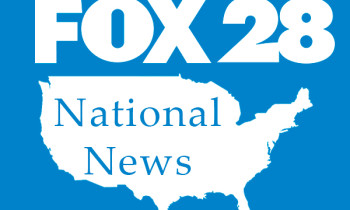
Key Takeaways
FDA has proposed new front-of-package labels highlighting sugar, salt, and fat levels in food & drinksThese labels would rank nutrient levels as high, medium, or low, making it easier for buyers to make healthier choicesFood companies could have up to four years to comply if the proposal becomes final
WEDNESDAY, Jan. 15, 2025 (HealthDay News) — Grabbing a quick snack might soon come with a little extra clarity.
The U.S. Food and Drug Administration (FDA) has proposed a new rule requiring bold, easy-to-read nutrition labels on the front of food and beverage packages.
These labels, which would highlight content of sugar, salt, and saturated fat, aim to make it easier for shoppers to make healthier choices in the grocery aisle — helping to tackle the rising rates of obesity and conditions such as Type 2 diabetes, heart disease, and high blood pressure, a media report from The New York Times states.
These chronic illnesses affect over 60% of American adults and contribute to an estimated $4.5 trillion in annual health care costs, according to the FDA.
“Nearly everyone knows or cares for someone with a chronic disease that is due, in part, to the food we eat,” Dr. Robert Califf, the commissioner of the FDA, said in a statement released by the administration. “It is time we make it easier for consumers to glance, grab and go.”
The black-and-white labels would appear on the front of products, unlike the current back-of-package Nutrition Facts panel, which lists dietary facts such as calorie counts, serving sizes, and ingredients.
The new proposal is the result of three years of research by FDA scientists, who studied similar front-of-package labeling systems used in countries like Canada, the United Kingdom, and Chile.
Focus group testing of 10,000 people found that these proposed labels were easier to understand and effective at conveying nutrition information, the FDA said.
If the labels are finalized, food manufacturers would have up to four years to comply.
The proposed rule has drawn praise and criticism.
“This proposal is a real step forward in our efforts to better inform consumers, although we wish the administration had selected a nutrition warning format which is more likely to favorably affect purchasing decisions,” Peter Lurie, executive director of the Center for Science in the Public Interest, an advocacy group that first petitioned the FDA to require front-of-package labels in 2006, told The Times.
The food industry, however, pushed back. Sarah Gallo of the Consumer Brands Association said the labels lack important details, such as calorie counts and the presence of nutrients essential for a healthy diet.
Senator Bernie Sanders also criticized the plan, calling it “pathetically weak” to address the real dangers of ultra-processed foods, which make up a majority of calories consumed by Americans regularly.
Some experts believe the front-of-package labels could encourage food companies to reformulate products to avoid “high” levels of sugar, salt, or fat.
“If you’re a retailer selling something that’s just above the threshold, you have a lot of incentive to take a little bit of sugar out of your breakfast cereal so it doesn’t bear the high label,” Anna Grummon, the director of the Stanford Food Policy Lab, told The Times. “That’s a win for consumers.”
More information
UPenn has more on the struggles of conveying health concerns in food labels.
SOURCE: U.S. Food and Drug Administration (FDA), announcement, Jan. 14, 2025; The New York Times
What This Means For You
If finalized, these labels could push manufacturers to improve their recipes for a healthier food supply.


